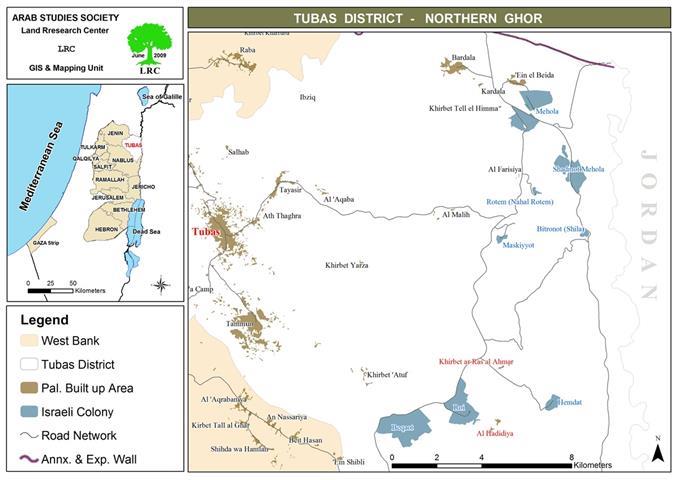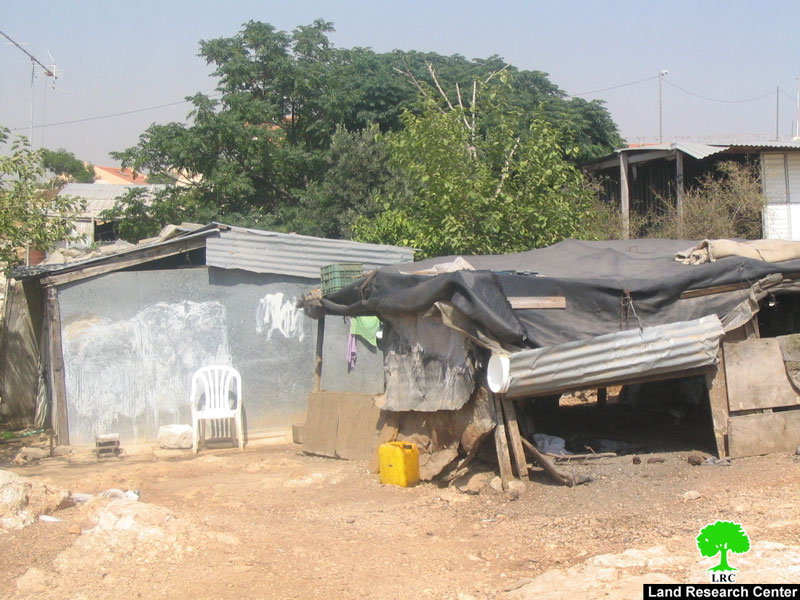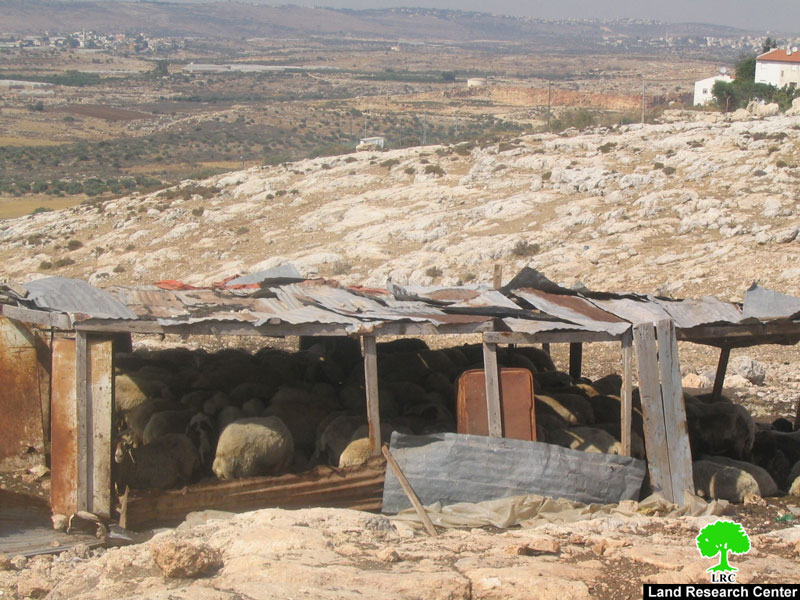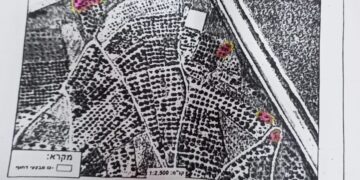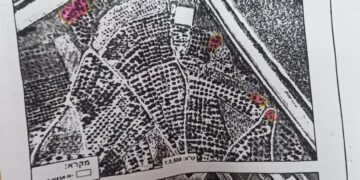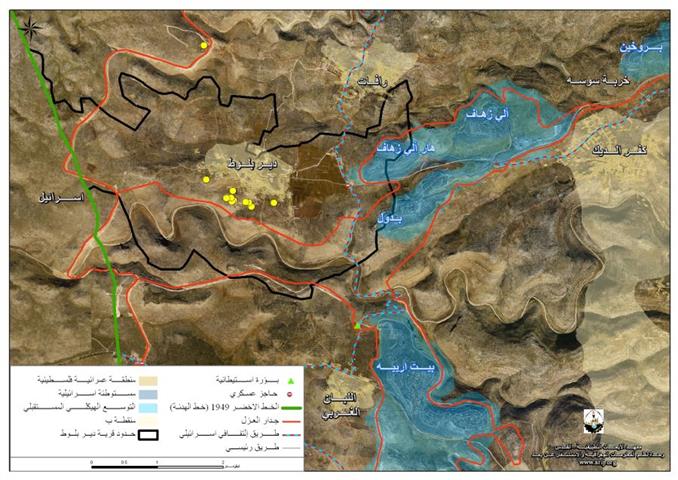Israeli forces are continuing their aggressive tactics against the Palestinian residents of Tubas Governorate and the northern parts of the Jordan Valley. Such procedures took the form of intense and random military maneuvers in addition to land confiscations and declaring large parts of it as Closed Military Zones to which Palestinian are not allowed to enter. Such declarations are aimed at hitting the Palestinians in their livelihoods as most of them are herders who depend on grazing their sheep as the main source of income. Not being able to access large areas of lands aims at forcing these herds to leave their lands to be easily incorporated in the future into existing or planned colonies.
It has to be mentioned that Israeli occupation authorities have delivered in early June 2009 collective eviction orders to the Palestinian residents of the communities of Al Buqea’a, Al Hadidiya and Humsa in the northern Jordan Valley. These orders are seen as part of a deliberate program practiced by these authorities to increase the hardship of the Palestinians living in these areas. Continuous searches, opening fire at homes and the sheep (which led to the death of a number of them) have all led to serious economic blows to the fragile economy of these herders in an attempt to force them out of the Valley. See Map 1
The said eviction orders (28 eviction orders that has to be carried out in 48 hours in addition to 5 Stop Work Orders) were delivered to residents and herders in the areas of Al Hadidiya and Al Ras Al Ahmar ordering them to remove their belongings and structures in 48 hours while other orders informed a number of people that they have to attend a court session against them in Bet El on June 25th, 2009. The following table lists the names of house and shelter owners under the threat of immediate demolition in Al Ras Al Ahmar area:
| Name | No | Name | No. |
| Saqer Izzat Bani Oudeh | 11 | Lutfi Sa’eid Bani Oudeh | 1 |
| Mohammad Khader Bani Oudeh | 12 | Jamil Suleiman Bani Oudeh | 2 |
| Jamal Khader Bani Oudeh | 13 | Mohammad Fahed Bani Oudeh | 3 |
| Ali Izzat Bani Oudeh | 14 | Hasan Abdullah Ahmad Bani Oudeh | 4 |
| Izzat Yousef Bani Oudeh | 15 | Inad Hasan Bano Oudeh | 5 |
| Saleh Abdullah Hasan Bisharat | 16 | Ali Khader Fayed Bani Oudeh | 6 |
| Abdullah Hasan Bisharat | 17 | Jamil Khader Fayed Bani Oudeh | 7 |
| Mohammad Mahmoud Bisharat | 18 | Iyad Mustafa Abdel Razzaq Bai Oudeh | 8 |
| Jamil Khader Fayyad Bani Oudeh | 19 | Mustafa Abdel Razzaq Bani Oudeh | 9 |
|
|
Ayman Izzat Bani Oudeh | 10 |
The following table lists the Palestinian residents of Al Hadidiya who received Stop Work and demolition orders:
| Name | No | Name | No |
| Abdel Raheem Hasan Bisharat | 8 | Mohammad Aref Bisharat | 1 |
| Mohammad Ali Bani Oudeh | 9 | Abdullah Hafez Bani Oudeh | 2 |
| Ali Mohammad Ali Bani Oudeh | 10 | Saleh Younis Bani Oudeh | 3 |
| Salem Ali Ka’abneh | 11 | Naji Ali Ka’abneh
Saleh Younis Bani Oudeh |
4 |
| Ghyyath Abdel Mahi Salameen | 12 | Ibrahim Issa Samou’ei | 5 |
| Ismae’il Fareej Abu Kbash | 13 | Waleed Suleiman Al Kbash | 6 |
| Ali Oudeh Ali Ka’abneh. | 14 | Hasan Salem Ali Ka’abneh | 7 |
It is worth pointing out that on the 3rd of June, 2009 Israeli occupation forces gave 6 Palestinian residents of Khirbet Al Samra (located in the vicinity of Al Hadidiya) demolition orders affecting 35 Palestinians including 18 children. The residents were given a time period until the 28th of May 2010 (the date of their upcoming court hearing in Bet El) to get the necessary permits for their shelters and structures. The following table lists Al Samra residents who received such orders:
| Name | No |
| Eid Oudeh Khader Daraghma | 1 |
| Diab Eid Daraghma | 2 |
| Ayman Eid Daraghma | 3 |
| Fawzi Eid Daraghma | 4 |
| Mahyoub Mohammad Amer | 5 |
| Na’eim Jamil Daraghma | 6 |
However, on the 4th of June, 2009 Israeli occupation forces demolished most of the structures and shelters that were given demolition orders which led 18 families (including 67 children) to become homeless. Only one structure escaped the demolition spree described as the largest in the Jordan Valley leading to the eviction of one third of the residents of the Bedouin community. The following table lists the damages resulting from the demolition operation in Al Ras Al Ahmar in the Jordan Valley:
| No. | Name | FamilyMembers | No. ofDemolished Structures | ||
| Houses | Animalpens | Total | |||
| 1 | Lutfi Sa’eid Bani Oudeh |
10 |
1 |
2 |
4 |
| 2 | Jamal Suleiman Bani Oudeh |
8 |
1 |
2 |
4 |
| 3 | Mohammad Fahed Bani Oudeh |
11 |
0 |
1 |
2 |
| 4 | Hasan Abdullah Bani Oudeh |
6 |
0 |
0 |
1 |
| 5 | Imad Hasan Bani Oudeh |
5 |
0 |
0 |
1 |
| 6 | Ali Khader Bani Oudeh |
6 |
1 |
1 |
3 |
| 7 | Jamil Khader Bani Oudeh |
5 |
1 |
2 |
4 |
| 8 | Iyad Mustafa Bani Oudeh |
5 |
1 |
1 |
3 |
| 9 | Mustafa Abdel Razzaq Bani Oudeh |
4 |
1 |
1 |
3 |
| 10 | Ayman Izzat Bani Oudeh |
8 |
1 |
1 |
3 |
| 11 | Saqer Izzat Bani Oudeh |
12 |
1 |
6 |
8 |
| 12 | Mohammad Khader Bani Oudeh |
10 |
1 |
3 |
5 |
| 13 | Jamal Khader Bani Oudeh |
6 |
1 |
1 |
3 |
| 14 | Ali Izzat Bani Oudeh |
6 |
1 |
2 |
4 |
| 15 | Izzat Yousef Bani Oudeh |
4 |
1 |
2 |
4 |
| 16 | Saleh Abdullah Hasan Bisharat |
5 |
1 |
2 |
4 |
| 17 | Abdullah Hasan Bisharat |
8 |
1 |
1 |
3 |
| 18 | Mohammad Mahmoud Bisharat |
9 |
1 |
2 |
4 |
| TOTAL | 128 |
15 |
30 | 63 | |
Note: The source of the information listed in the above table is the Office for Coordination of Humanitarian Affairs (OCHA).
In addition to the damages listed above, Israeli occupation forces confiscated a water tank, a vehicle and a small bulldozer from the site of the demolition.
Al Ras Al Ahmad and Al Hadidiya; General Information
The khirbets of Ras Al Ahmar, Al Hadidiya and Samra are all located in the northern parts of the Jordan Valley. They are Bedouin communities (originally from the town of Tamoun in Tubas Governorate) in which 400 Bedouins from the clans of Bisharat and Bani Oudeh are residing. They have lived in the fertile khirbets before the Israeli occupation of the West Bank in 1967. Al Hadidiya residents collectively own approximately 10,000 sheep as herding is their main source of income and livelihood. However, upon the inception of the Israeli occupation Israeli colonies started to pop up in the area. The establishment of the colony of Ro’ie was the beginning of the sustained suffering of the Bedouin communities in the area. Al Hadidiya residents are the biggest example of that as their shelters have been demolished numerous times under the pretext that their presence in that area is “not authorized” according to the Israeli occupation authorities.
Photos 1-3: Life in the khirbets of Al Hadidiya and Al Samra
It is worth pointing out that the residents of Al Hadidiya (who lived in the area before the 1967 occupation) were evicted numerous times the last of which took place in February and March 2009 when 30 Palestinian become homeless then.
Also, in December 2006 the Israeli High Court refused the arguments presented in an appeal filed by the residents of Al Hadidiya against previous home demolition orders issued by the occupation authorities. The rejection was on the grounds that the said homes and structures are located in an area classified as Green Area in Master Plans issued during the British Mandate era. The response of the Court was that the Palestinians living there must be evicted as they form a source of threat to the settlement of Ro’ie which is 2 kilometers away from Samra and Al Hadidiya khirbets.
:::::::::::_
[1] Sources: Tubas Municipality and the UN OCHA
Prepared by:


